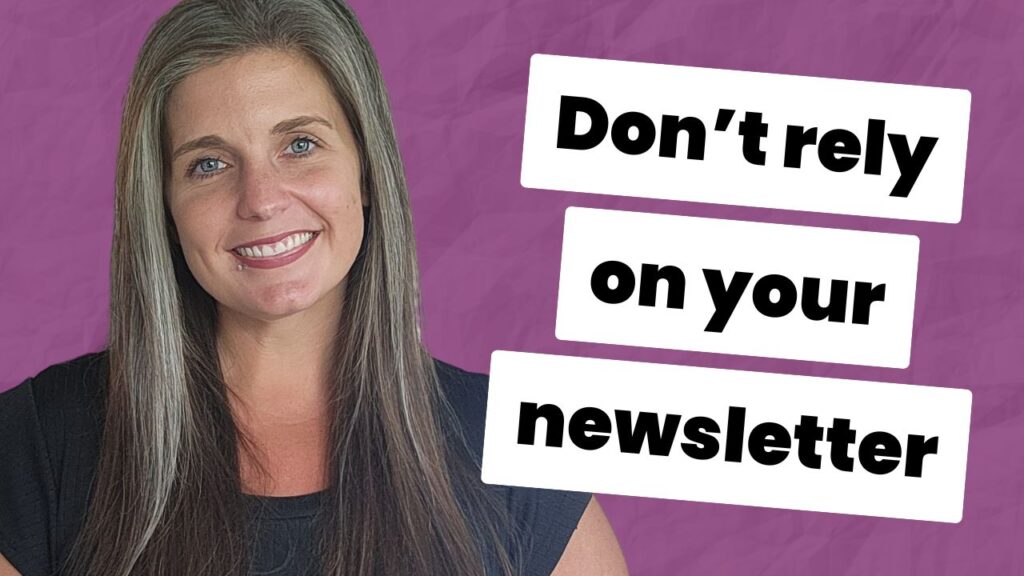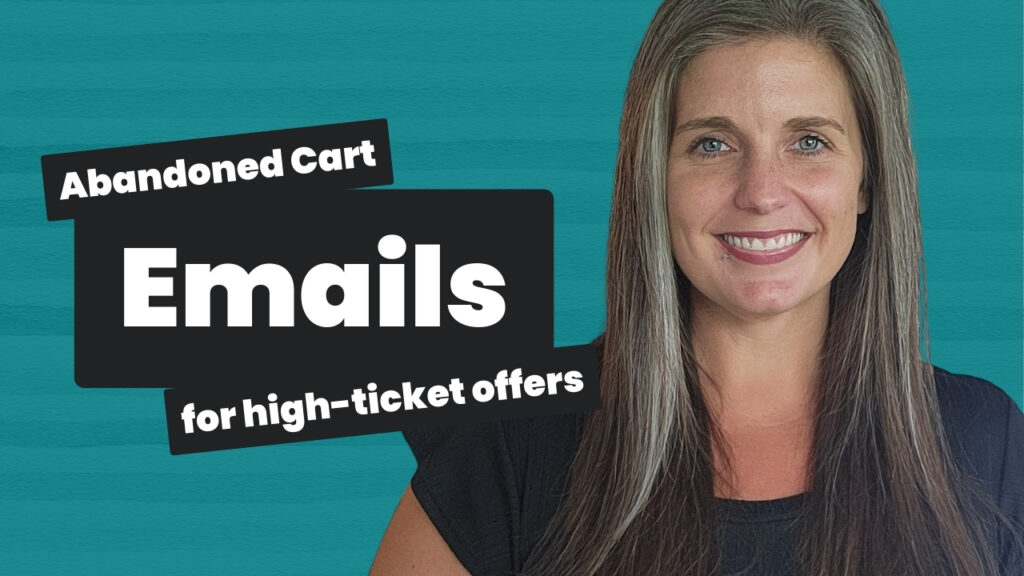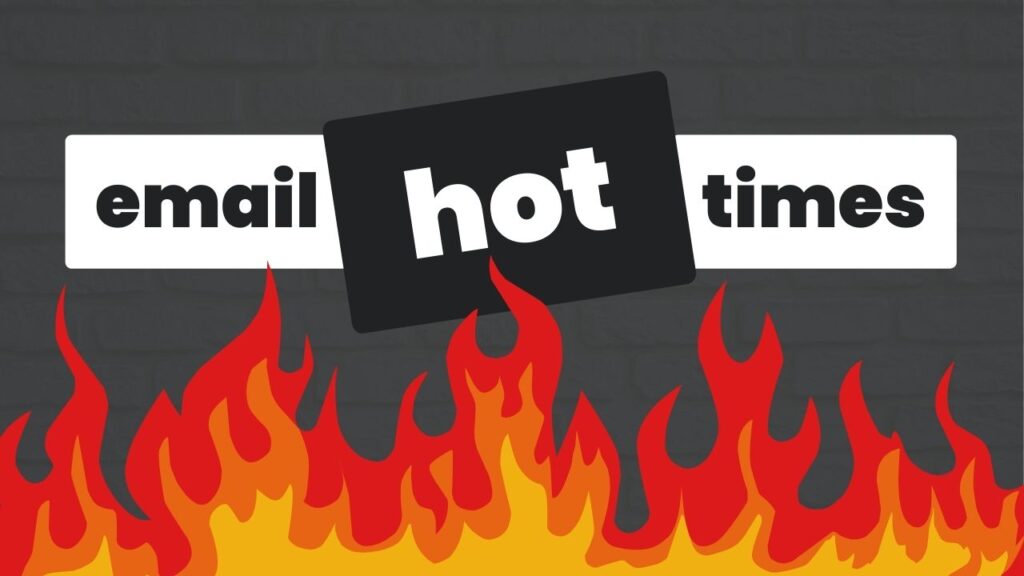If you want more newsletter subscribers, STOP promising them a “newsletter!” No one cares about getting more newsletters in their inbox (unless you’ve built a strong reputation for your expertise). They want what’s inside that newsletter.
Use these tips to position your newsletter as highly desirable to more potential buyers. Without creating a single lead magnet!
TRANSCRIPT:
Hi there, Paige here from The Impact Copywriter and The Sales Photoshop. Today, we’re going to talk about email newsletters and, more specifically, how you can get more subscribers for yours.
Now, before we get started, let’s recap the basics for anyone who’s wondering, “What is an email newsletter?” It’s simply an email that you send on some kind of frequency, whether it’s weekly, bimonthly (every two weeks), once a month, or some other frequency, with a bit of information inside. They’re important to people who do online business or have online sales channels because your subscribers are your leads. You want to follow up with them and send them helpful content to build credibility, authority, and trust so that they’re more likely to buy from you later on.
You can send things like blog posts, videos, lead magnets, or even just an email with no links at all that provides mindset shifts or things to help them overcome whatever is blocking them. You can also send updates about products, your brand, and promotions. There’s a lot of opportunity in email marketing, and your email newsletter can play a huge role in that.
The odds are you already have an email newsletter on your website, either through a box, a section on your site, a pop-up, or on your blog. The problem I see with most newsletters is that they message it like, “Sign up for my newsletter” or “Get my newsletter.” The thing about that is people don’t want newsletters. Most people don’t want newsletters unless they’re already in love with your brand and want to stay up-to-date with it. People don’t want to read a newsletter “quote-unquote”; they really want what’s inside. So, people aren’t using that message to tell people what’s inside, and there’s really no incentive to sign up for it.
If you’re using a newsletter to entice people to join your email list so you can sell them stuff later on and build that relationship, trust, and credibility, but you’re not satisfied with your list growth, this is for you. This is a way that you can improve that. I’m going to share with you how to get more signups for your newsletter by turning it into a lead magnet, so to say, or positioning it as a lead magnet or a freebie.
Before we get started, let’s make sure that you understand that people are really motivated by two core things:
Solving specific problems, like “How do I fix a Facebook ad campaign that doesn’t convert?”
Achieving some sort of outcome, such as “How to create a Facebook ad campaign that sells my online course.”
When you’re thinking about creating any sort of messaging, you want to make sure you’re looking at problems and outcomes because that’s what motivates people to take action. If you want to make your newsletter more enticing, you’re going to start with your messaging.
You’re not going to say, “Sign up for my newsletter.” That’s super boring and doesn’t indicate that I’m going to get anything of value out of it. Why do I want more spam in my inbox, right? Remember, your newsletter is a container. It’s just a format. What matters is what’s inside, and that’s what you have to message and communicate.
In other words, we’re going to position your newsletter as a lead magnet and use the same techniques without actually creating a lead magnet, which can be a bit more time-consuming. I can show you an example. Let me minimize my head here.
There are definitely ways I can improve this, and I do have other lead magnets, so I haven’t really touched this in a while. But when I was first starting out and had a newsletter that was the only list-building opportunity or way to get on my list, this is kind of the landing page or headline that I used. This is still live, so if you go to TheImpactCopywriter.com/free-hacks, you can actually still use this. It’s live and continues to get subscribers, so for now, I’m not messing with it.
You can see I do say that this is the “mostly weekly newsletter” because I don’t always email every week. But all I did was shift it into what they’re actually going to get out of being on my list: “Get free funnel hacks two to four times a month.” That was it, and that’s not even really tied to a problem or a solution.
I am working on some other kinds of lead magnets, following the tips I’m going to share in this video. But I just want to show you a simple way that you don’t say “Sign up for my newsletter.” This is focused on what they’re going to get out of the newsletter. I could take this even a step further by saying what problem I’m going to solve or what outcome these emails help them achieve. Actually, I might say that on another signup page that’s a little bit different but still goes to the newsletter.
Here, I’ve messaged it more like “Get free tips to help you sell more digital products and programs two to four times a month.” So here we’re targeting that outcome, which is selling more of your digital products and programs.
These are just two examples of how you could, in a really simple way with very little copywriting skill, position your newsletter or the message around your newsletter to focus on what people get out of it.
Alright, so let me bring my head up here.
You’re probably wondering, “How do I go about doing that?” I’m actually going to share some tips with you.
The first thing you’re going to want to do is to decide who your ideal customer is and really narrow in on who you want to speak to with this message. Depending on what your business looks like, you may need to make different messages for different groups of people.
For example, if you’re selling to SaaS companies versus course creators and you’ve helped both, you’re going to have to message to those differently because course creators want to sell courses and SaaS companies want to sign up more users. That’s a very different language, so you may need two different kinds of messages for those people, even though they might end up on the same list—but probably not, because they’re so different.
Even if they could end up on the same list, you could use different opt-in boxes and different landing pages for those just to change the message so that you’re really speaking to those people in a way that’s going to get them excited and grab their attention.
Step two is to figure out what your ideal customers really care about. Remember, they want to solve problems and achieve specific outcomes. Dive into those problems and outcomes. One great way to do this is by using online conversation mining and relevant Facebook groups.
Go into Facebook groups where the people you’re trying to reach are hanging out, and use the search function in the left-hand sidebar to search for specific keywords. Look for conversations related to those keywords where you can find problems and outcomes, and use that language to help you craft your message later on.
Once you have a strong understanding of the problems people are suffering from—the most relevant and painful problems—and the most desired outcomes, you can look at how those overlap with the content you’re going to share.
Of course, the content you’re going to share is related to what you do as a business, such as the courses you sell, the service you provide, your membership content, or the coaching packages you offer. You want to ensure there’s strong alignment so that you’re not attracting the wrong people.
Look at what problems and solutions your products and services actually solve, and then look at how they overlap with the problems and solutions you found in your online conversation mining. There you’ll find a strong sweet spot.
Now that you have your sweet spot—either a problem or outcome—and you understand who that customer is and have a clear idea of who that person is going to be, I recommend using some headline formulas to brainstorm amazing, attractive headlines.
If you’re not a copywriter, and I’m assuming you’re not, the easiest way is to Google search for headline formulas and find different options. Then brainstorm using that information and the details you’ve gathered to write twenty to thirty different headlines. Go back through those and find the ones that sound the strongest.
Once you have your messaging, you can create a landing page. You need to promote it, right? I always recommend having a dedicated landing page that can be shared across the web.
If you’re going to do different messages for different customer groups, you’ll need multiple landing pages so you can share the one for course creators with course creators and the one for SaaS companies with SaaS companies.
Also, make sure you have opt-in opportunities in your sidebars, on your blog, maybe in the footer of your blog, and possibly in exit intent pop-ups. When a visitor lands on your homepage, for example, and decides they’re not going to move forward or do anything yet, and they go to exit, a pop-up can appear offering something.
You might offer them to join your newsletter, but again, we’re going to use the message you came up with in the previous steps. That’s how you maximize people who land on your site and get more people onto your newsletter.
So, at this point, if you’re wondering if you have to create a PDF or some other kind of download, sure, you can create a freebie that’s more of a lead magnet strategy. Instead of positioning it as a lead magnet, you’re just creating a lead magnet. Through email automation, you can add them to the newsletter—that’s fine too if that’s the role or path you want to take. But you don’t have to; you can simply position the newsletter as a freebie by being really specific about what they’re going to get out of it.
You can deliver a series of blog posts, for example. If you want to get really specific, you can just include five blog posts or five links to five videos in your delivery email once they sign up for the newsletter. Or you can space it out so they get one email for five days about a specific topic and then go into the general newsletter list. You’re not really creating a lead magnet; you’re just repurposing content you’ve already created but curating it so that it’s useful for the person who’s just joined your list.
For your new subscriber, if I were to create a message around “Five Ways to Improve Your Sales Page to Sell More Courses,” that could go in my newsletter. But in my delivery email, I would want to make sure I include those five links, or I could space it out over five days and do one email per day with the links to those videos or articles with the purpose of helping them understand how to improve their sales page to sell more courses.
I’m not creating a lead magnet; I’m curating content around a specific scenario. That’s the messaging, and that’s what I’m delivering. What matters is that you deliver what was promised. It doesn’t have to be a PDF. How many people have a bunch of PDFs on their desktop that they’ve never really looked at and have just gone into the Downloads graveyard? It doesn’t have to be a PDF; it can be an email with a collection of blog posts, live links, or links to videos.
What matters is that you deliver what you promised because they’ve trusted you and given you their email address. If you don’t deliver what you promised, you start to degrade that tiny bit of trust they’ve already put in your hands, and we don’t want that, right? This is about trust-building and building relationships so that people will buy from you later on.
If you follow these tips in this video, you will have gone from a boring, unenticing newsletter to a strategic, smart, and attractive kind of lead magnet with very little effort. As a result of the way you message your newsletter—focusing on a specific type of customer and the problems and/or outcomes they really want to solve or achieve—you’re going to get more subscribers to opt-in to your list.


